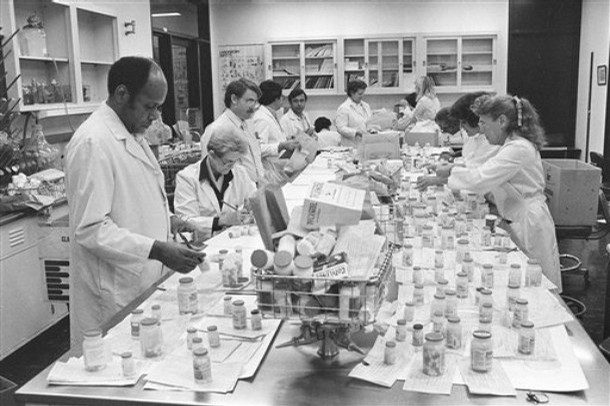Folks are rightly skeptical about the safety of the food supply. Outbreaks of foodborne illness are happening daily, and some of the outbreaks involve levels of  deception, malfeasance and yukkiness that are criminal.
deception, malfeasance and yukkiness that are criminal.
Levels of trust ain’t good.
Lynn Frewer, formerly of the U.K. and now based at Wageningen University in The Netherlands, has been doing the food safety risk communication thing for a long time and is darn good at it. Frewer and colleagues published a new paper in Food Policy last week that summarized much of the existing research and some new work to map out a strategy for those who talk about food safety in public arenas.
The results validated what a bunch of us have been saying for decades:
• understand consumer risk perceptions and information needs;
• segment and target communications;
• institutions and industry must stress risk mitigation activities, including prevention and the effectiveness of enforcement systems;
• account for cultural and at-risk populations when creating messages;
• enhance transparency by making public information about ongoing management and research activities, the processes adopted regarding establishing regulatory and resource allocation priorities, and whether rapid responses by food risk managers to mitigate food safety incidents have been made;
• consumer protection and public health must be the top priority; and,
• tell ‘em what you don’t know (I’m sure that’s a scientific term).
How are such recommendations executed, especially during an outbreak of foodborne illness, when consumers are paying attention?
 Gustavo Anaya, the owner of Oregon’s Los Dos Amigos Family Mexican Restaurant, issued a written apology to its customers after 30 patrons were sickened in a Salmonella outbreak linked to the Jackson Street, Roseburg, business.
Gustavo Anaya, the owner of Oregon’s Los Dos Amigos Family Mexican Restaurant, issued a written apology to its customers after 30 patrons were sickened in a Salmonella outbreak linked to the Jackson Street, Roseburg, business.
Gustavo and his son, Manny Anaya, delivered letters to media outlets in Douglas County on Friday.
“We send our sincerest apologies to the people and family members who were affected by the salmonella outbreak,” the letter stated.
Saying, I’m sorry, is not always an admission of blame. It’s also a sign of empathy, that most basic of human traits, which is crucial in building trust.
Communications alone, however, are never enough. The restaurant will have issues if it is discovered to have improperly assessed or ignored food safety risks.
Cope, S., et al. Consumer perceptions of best practice in food risk communication and management: Implications for risk analysis policy. Food Policy (2010), doi:10.1016/j.foodpol.2010.04.002
Abstract
As a consequence of recent food safety incidents, consumer trust in European food safety management has diminished. A risk governance framework that formally institutes stakeholder (including consumer) consultation and dialogue through a transparent and accountable process has been proposed, with due emphasis on risk communication. This paper delivers actionable policy recommendations based on consumer preferences for different approaches to food risk management. These results suggest that risk communication should be informed by knowledge of consumer risk perceptions and information needs, including individual differences in consumer preferences and requirements, and differences in these relating to socio-historical context associated with regulation. In addition, information about what is being done to identify, prevent and manage food risks needs to be communicated to consumers, together with consistent messages regarding preventative programs, enforcement systems, and scientific uncertainty and variability associated with risk assessments. Cross-cultural differences in consumer perception and information preferences suggest a national or regional strategy for food risk communication may be more effective than one applied at a pan-European level.
http://www.sciencedirect.com/science?_ob=ArticleURL&_udi=B6VCB-502NK5Y-1&_user=10&_coverDate=05%2F13%2F2010&_rdoc=1&_fmt=high&_orig=search&_sort=d&_docanchor=&view=c&_acct=C000050221&_version=1&_urlVersion=0&_userid=10&md5=126449b7903c417060e53954e450d621

 never enough when faced with a risky situation – it’s the combination of risk assessment and management, along with communications, that helps individuals, corporations and governments regain trust and public favor.
never enough when faced with a risky situation – it’s the combination of risk assessment and management, along with communications, that helps individuals, corporations and governments regain trust and public favor. In 1999, the Belgian government delayed communicating with the public and other European agencies about possible risks, failed to acknowledge perceived risks with dioxin-laden feed, and ultimately suffered huge economic losses, a damaged food industry and deterioration in public confidence.
In 1999, the Belgian government delayed communicating with the public and other European agencies about possible risks, failed to acknowledge perceived risks with dioxin-laden feed, and ultimately suffered huge economic losses, a damaged food industry and deterioration in public confidence. They all sucked. And a lot of people got sick and died.
They all sucked. And a lot of people got sick and died. On Friday, McNeil Consumer Healthcare, a division of Johnson & Johnson, announced the recall of several hundred batches of popular over-the-counter medicines, including Benadryl, Motrin, Rolaids, Simply Sleep, St. Joseph Aspirin and Tylenol.
On Friday, McNeil Consumer Healthcare, a division of Johnson & Johnson, announced the recall of several hundred batches of popular over-the-counter medicines, including Benadryl, Motrin, Rolaids, Simply Sleep, St. Joseph Aspirin and Tylenol.